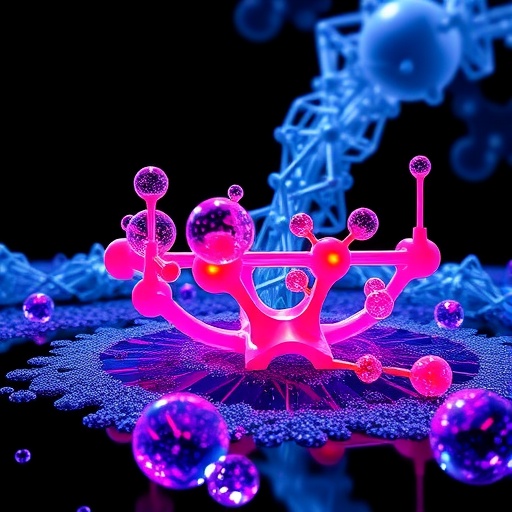In the rapidly evolving landscape of sustainable technologies, electrochemical ion pumping has emerged as a promising frontier for water purification, energy storage, and resource recovery. A groundbreaking study has recently shed light on the intricate mechanisms governing ion transport within ion-shuttling electrodes—a critical component that powers the efficiency and selectivity of these electrochemical devices. Published in Nature Water, the research offers not only a theoretical framework but also paves the way for designing next-generation ion exchange systems with unprecedented precision and functionality.
Ion-shuttling electrodes operate by dynamically capturing and releasing ions upon electrical stimulation, enabling selective ion separation from complex aqueous solutions. This process, known as electrochemical ion pumping, holds immense potential for addressing global challenges such as desalination, brine management, and nutrient recovery from wastewater. However, the fundamental understanding of how ions migrate and interact within these dynamic electrodes under varying operational conditions has remained elusive until now.
The team led by Liu, Dykstra, and Biesheuvel presents an advanced theoretical model that captures the essence of dynamic ion transport in ion-shuttling electrodes. At its core, this theory integrates the complex interplay between ionic species, electrode material properties, and applied electrical potential, allowing for predictive capabilities of ion flux and selectivity during charge-discharge cycles. Unlike static ion-exchange membranes or traditional capacitive deionization systems, ion-shuttling electrodes are uniquely dynamic, making the transport phenomena inherently transient and complex.
Central to their approach is the coupling of electrochemical kinetics with mass transport processes. By considering the adsorption and desorption of ions as well as their diffusion and migration within the electrode matrix, the model elucidates how ions are selectively transported via redox-active sites distributed throughout the electrode material. These redox sites act as molecular gateways, opening and closing depending on the electrode’s charge state, thereby facilitating a highly controlled ion exchange process that is both reversible and efficient.
An especially novel aspect of this work is the inclusion of the so-called “ion-shuttle mechanism,” where ions are effectively ferried through an alternating oxidation and reduction cycle within the electrode. This mechanism amplifies transport rates compared to diffusive processes alone, highlighting a dynamic mode of ion manipulation that transcends conventional electrochemical approaches. By capturing this mechanism, the model successfully predicts performance metrics critical for scaling up ion pumping technologies.
The implications of this theoretical breakthrough extend beyond simply describing ion transport. By providing a quantitative framework, the research enables rational electrode design—allowing engineers to tweak material properties such as pore size distribution, redox site density, and electrical conductivity to optimize ion selectivity and energy efficiency. This insight is particularly vital for applications demanding high purity outputs, such as lithium extraction from brine or selective removal of nitrate contaminants from groundwater.
Moreover, the model reveals the importance of operational parameters including current density, voltage window, and cycle duration on ion transport dynamics. Understanding these dependencies facilitates the development of optimized operational protocols that balance energy consumption with ion removal capacity. Such optimizations can dramatically reduce overall costs and improve the sustainability profile of water treatment systems employing ion-shuttling electrodes.
From a materials science perspective, the theoretical framework also guides the synthesis of novel electrode materials. By linking microscale ion transport phenomena to macroscale performance, the research opens avenues for formulating tailored composite electrodes that leverage synergistic interactions between conductive polymers, metal oxides, and porous carbon scaffolds. These hybrid materials could exploit the ion-shuttle effect to enhance selectivity towards target ions while maintaining structural integrity during repeated charge-discharge cycles.
Beyond water purification, the principles unveiled by Liu and colleagues hold compelling potential for energy storage applications. Ion-shuttling electrodes could revolutionize battery technology by enabling selective insertion and extraction of specific ions, leading to longer cycle life and improved capacity retention. The theoretical model serves as a guidepost for designing advanced electrode architectures that harness dynamic ion transport to improve electrochemical energy storage beyond current lithium-ion paradigms.
Significantly, the study also addresses the challenges posed by complex ion mixtures commonly found in natural and industrial waters. The model’s ability to predict how competing ions interact within the electrode environment provides critical understanding for separation and recovery strategies in real-world scenarios. This expands the applicability of ion-shuttling electrochemical systems from laboratory demonstrations to commercial viability.
Throughout the research, meticulous comparisons between theoretical predictions and experimental data validate the robustness of the model. These validations instill confidence that the newly developed theory can serve as a foundational tool in both academic research and industrial development pipelines. As ion-shuttling technology transitions from concept to application, such theoretical rigor is indispensable in accelerating innovation cycles.
Looking forward, the integration of this dynamic ion transport theory with machine learning and data-driven optimization could unleash even greater advancements. By coupling predictive modeling with automated experimentation, researchers could rapidly decode optimal electrode configurations and operational settings, propelling ion-shuttling electrochemical devices toward mainstream adoption.
Ultimately, this pioneering work illuminates the path toward more efficient, selective, and adaptive electrochemical systems for water and energy. As global demands for clean water and sustainable energy intensify, innovations such as those spearheaded by Liu and collaborators will play pivotal roles in shaping our technological response to environmental challenges.
In summary, this study constitutes a landmark advancement in the fundamental understanding of ion transport within ion-shuttling electrodes. By elucidating the dynamic interplay of electrochemical processes and material properties, the research not only addresses current limitations but also unlocks new paradigms for designing highly efficient electrochemical ion pumping systems. The ripple effects of these insights promise transformative impacts across water purification, resource recovery, and energy storage sectors, heralding a future where electrochemical precision meets environmental necessity.
Subject of Research:
Electrochemical ion pumping through ion-shuttling electrodes, focusing on the theory of dynamic ion transport mechanisms for selective ion separation and energy-efficient operation.
Article Title:
Theory for dynamic ion transport in ion-shuttling electrodes for electrochemical ion pumping.
Article References:
Liu, W., Dykstra, J.E., Biesheuvel, P.M. et al. Theory for dynamic ion transport in ion-shuttling electrodes for electrochemical ion pumping. Nat Water (2025). https://doi.org/10.1038/s44221-025-00480-1
Image Credits:
AI Generated




